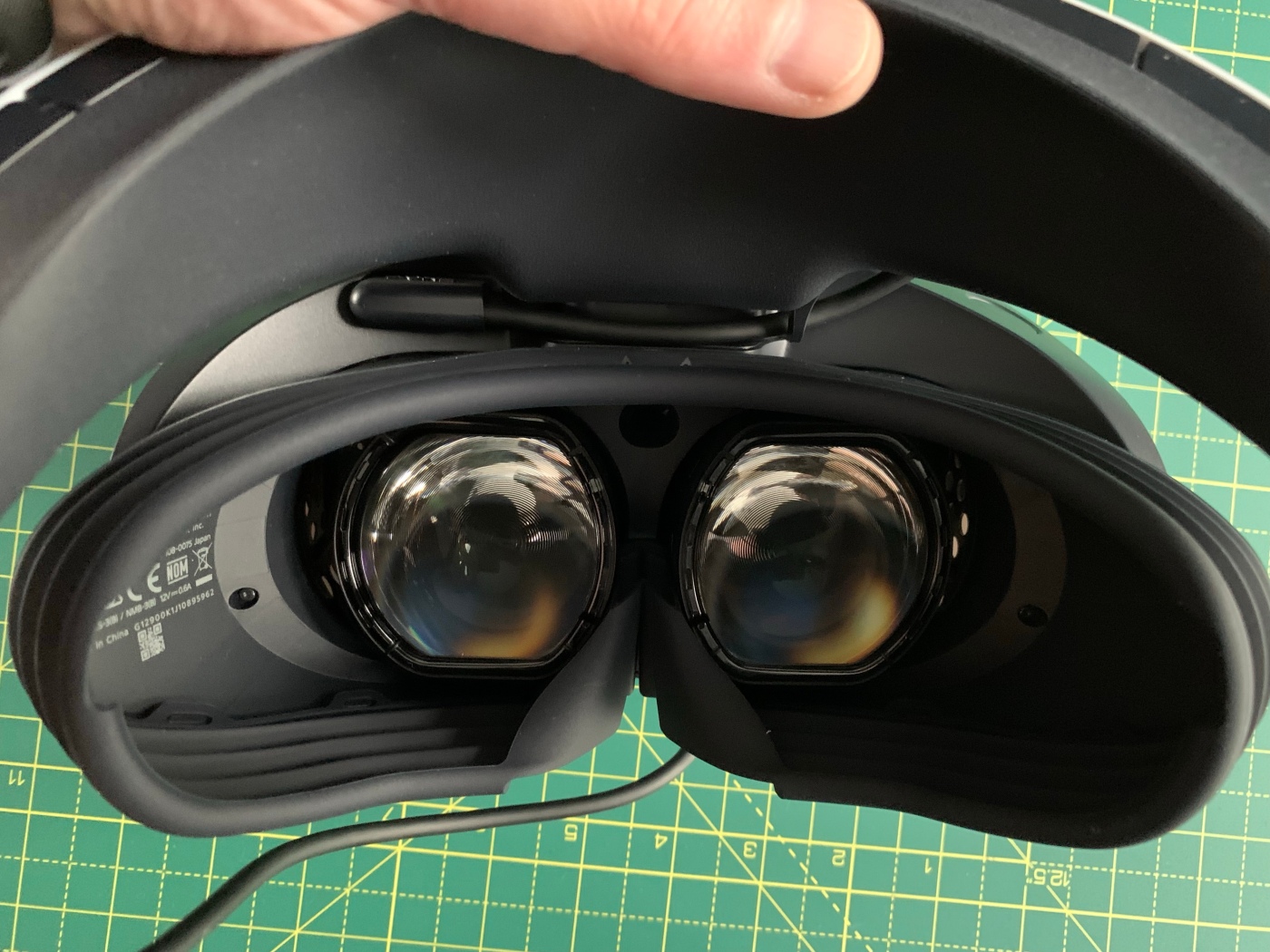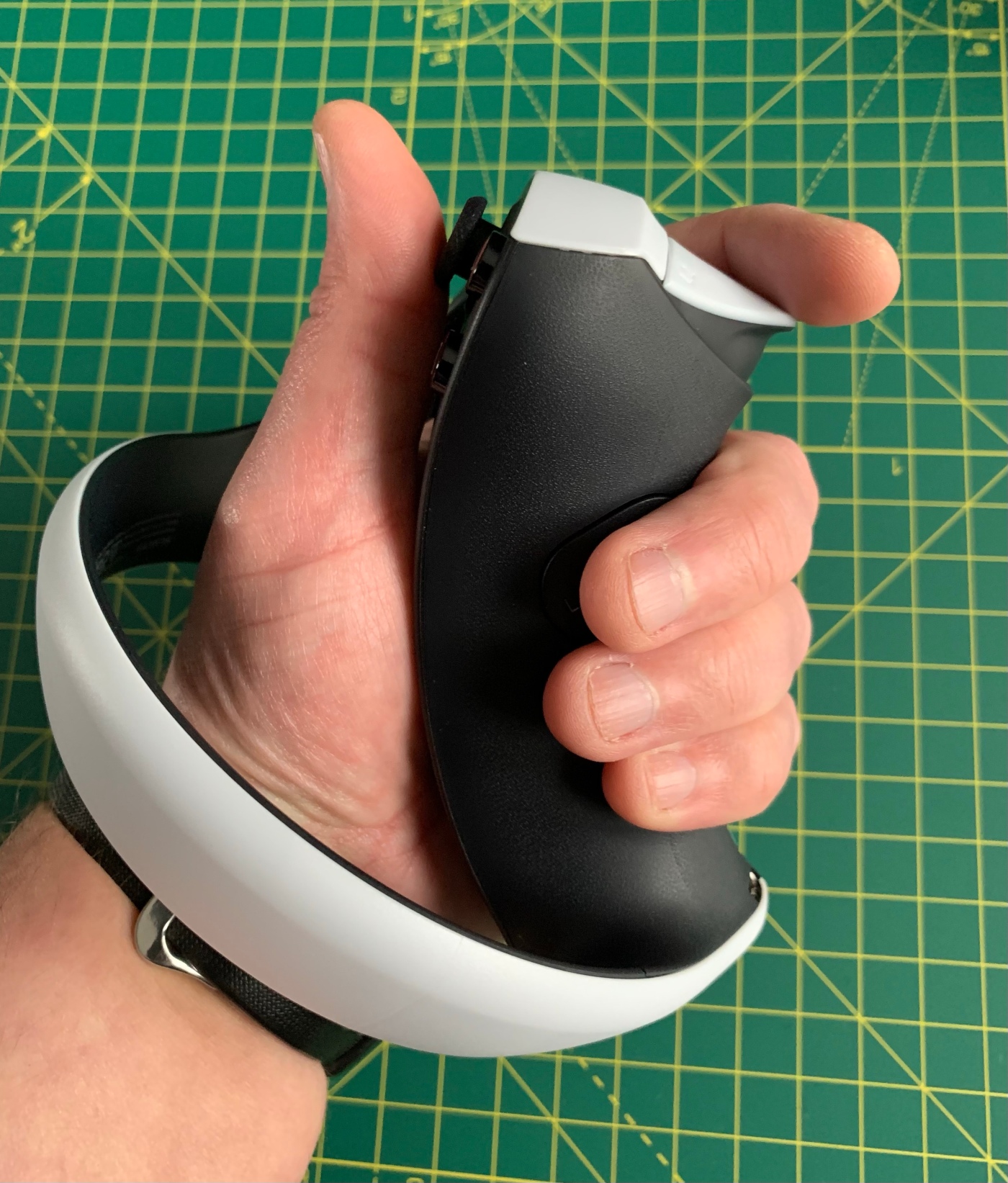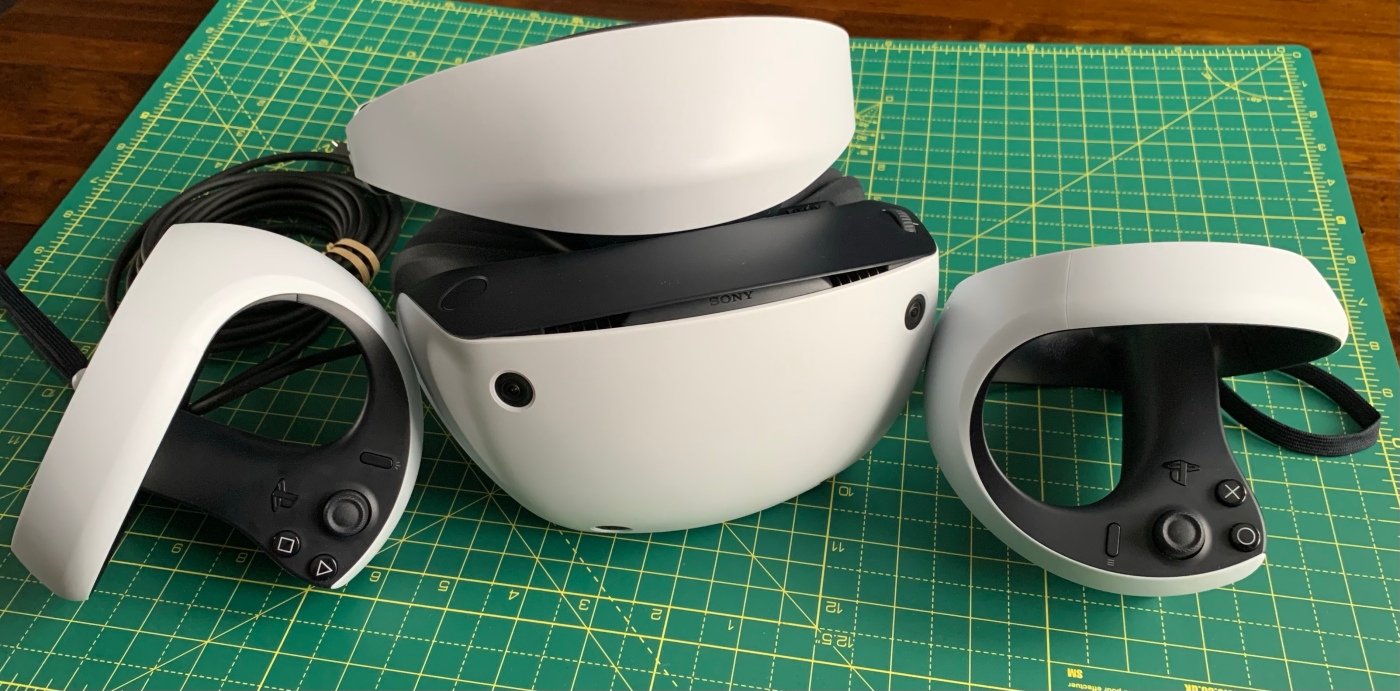After much contemplation, I finally couldn’t resist purchasing the newest addition to Sony’s next generation PS5, that is the PSVR 2. After previously owning the original PSVR headset, I really was in two minds, mainly because I had memories of the original headset. Whilst it was affordable, the per-panel resolution was poor, showing that terrible ‘screen door’ effect and with no HDR passthrough support. I also hated the fact that you had so many cables to connect into the junction box, meaning you needed more space under you TV unit.
Fast forward to 2023 and we now have the PSVR 2. This iteration appears to have overcome its original shortcomings in almost every way. Playing Horizon: Call of the Mountain looks absolutely stunning on the headset’s 2,000 x 2,040 Oled panel, with only a slight ‘screen door’ effect. With just one USB-C cable, which plugs directly into the front of the PS5, it literally takes seconds to set up and get going. Another obvious plus is the power of the PS5 itself, meaning that we should see some pretty amazing stuff in the future as long as Sony fully supports the PSVR 2 in the long term.

The only thing that may prevent decent sales, at least in the early months of the PSVR 2’s release, is its price. Costing more than the PS5 console itself, PSVR 2 is not going to be an impulse purchase or a must have accessory. You really are going to need to be into VR before contemplating whether to buy or not, even though spec-wise it beats everything on the market at the moment, and that includes the Valve Index.
So, if we take a quick look at the specs for the Sony PSVR 2:
Resolution: 2,000 x 2,040 per eye
Refresh rate: Up to 120Hz
Display: 4K OLED HDR
Field of view: 110 degrees
Audio: Included headset via 3.5mm headphone jack 3D audio.
Connection: 1x USB-C
Tracking: IR camera with Tobii eye-tracking
Requires: PS5 console
As already mentioned, the biggest hurdle for the consumer to overcome when buying the PSVR 2 will be its price. Selling for £529 in the UK, the PSVR 2 will be more expensive than a PS5, which may well turn off many potential buyers. Not only that, but at the moment you can only purchase the PSVR2 directly from the PlayStation Direct store. This almost put me off from purchasing on day one as I’m unsure whether there will be anyone available for delivery, which is expected around February 22nd – 28th.
As well as buying the standalone version, you can also purchase a PSVR 2 bundle that includes the launch title Horizon: Call of the Mountain. This bundle will cost $599 / £569 / AU$959. I think this will be the go-to version to buy for many as otherwise you probably won’t have any games, even if you already have or had the original PSVR and its backlog of available games since these games are not backwards compatible.
Also included are a pair of Sense controllers, with additional controllers costing $49/ £39/AU$70.

Design-wise, the PSVR 2 is very similar to the original headset. The most noticeable improvement for me was with its setup. This time round you only need to connect a single USB-C cable, which is around 14 feet in length, into your PS5. Whilst not everyone will like the idea of having a cable connected at all, this is still far simpler than the original PSVR and is a welcome addition.
That initial setup is also much easier this time round. Putting the headset on it will introduce you to the slider setup, which adjusts the headset’s distance from your eyes, as well as the rear headband’s dial, which helps secure the headset comfortably on the back of your head. It will also take you through PSVR 2’s focus slider, which once set, will help minimize any image ghosting, providing a sharper image.

Due to the much improved rubber face membrane, no outside light is visible when the headset worn, which is needed, otherwise it can break any immersion when playing games.
Compared to the original PSVR, this new headset is more lightweight and very comfortable to wear for extended gaming sessions, though you will still become tired if you play for too long, mainly due to the physical nature of virtual reality.

The adjustable headband is well cushioned and will provide a comfortable fit. It’s also much easier to take the headset on and off due to the slider. The headset itself is very well made and has a very premium feel to it.
There are two buttons on the underside of the headset, power button and camera function, both with a slightly concave feel. Once you get used to where they are, they are very easy to find and press.

I already own the Oculus Quest 2, and whilst I don’t use it every day, I still enjoy going on a virtual visit to my gaming library now and then. One of the features that the PSVR 2 uses the same as many other VR headsets is the passthrough camera, which will pause the gaming action and allow you to see your surroundings without having to take off the headset.
Activated by pressing a single button, the camera displays the real world in monochrome, and although it is grainy, it is of better quality than that of the Quest 2. It’s really useful when picking up the sense controllers or checking who is in the room watching you make a fool out of yourself.
Another new feature is the headset’s new eye-tracking feature, which many PC gamers may already be aware of. At the moment, its use is very limited within games and is mainly for browsing menus simply by looking at the option you wish to choose. The calibration for this feature is very simple and quite effective.
I found that it worked quite well and is a feature that I hope is implemented within the many upcoming games being released by Sony and not as just a gimmick. One area where the eye-tracking is implemented really well was with the foveated rendering. This involves your eyes being tracked in-game, allowing what you’re looking at to be in focus, whilst anything within your peripheral vision will be rendered at lower resolutions. This helps to run games more smoothly, using processing power where it’s needed the most.

One of the biggest leaps in the generational upgrade with PSVR 2 is with image quality. The original PSVR had 960 x 1,080 per eye resolution – games had a rather low, muggy look to them, which could impact greatly on motion sickness, especially with the lower refresh rates.
The PSVR 2 4K OLED panel has resolved this issue. The new panel resolution has gone up to 2,000 x 2,040, allowing for an amazing upgrade of clarity and detail. Horizon: Call of the Wild really shows an impressive level of detail and texture clarity, and it reminded me of when I first played Half-Life: Alyx: My jaw just dropped.
All that said, I was expecting the image to be considerably sharper, and whilst there is a decent leap, I never found it to be really sharp. I still wore my glasses, but it still wasn’t there, which I’m a little disappointed with. It’s certainly better than the PSVR 1 and the Quest 2, but it’s not a huge leap forward when I compare it to the Quest 2. I don’t know if it’s because of my eyes, but it’s still lacking in clarity a little.
During my time with the PSVR 2, I found that the games I played all maintained a locked 90Hz or 120Hz. This helped greatly with motion sickness, which I do tend to get. Don’t get me wrong, it was still there to a degree, but it was not as bad as with other VR headsets I’ve used.

Spatial audio is another great addition that features on the PSVR 2. Plug the included headphones into the headset (sorry, no Bluetooth) and you are greeted with some of the most immersive sound you will hear on a VR headset. You will hear every sound in the exact location and distance as you see it (or don’t) on-screen. I really can’t wait to see how well this is implemented in upcoming games.

When it comes to the game controllers, the PSVR 2 includes two Sense controllers. Anyone with a PS5 will already know some of the features that have moved across from the DualSense controller. The Sense controllers are basically the DualSense controllers split in half, with face buttons, analog sticks, and the triggers evenly split, as well as a Home button to access the PS5 dashboard.


The Sense controllers take a little getting used to, though anyone who has used the Oculus Quest 2 controllers shouldn’t have any issues. Motion control and accuracy is excellent, and I only noticed a few issues with hand tracking when playing Horizon where my hands would sometimes do odd things on-screen.
I don’t think the overall quality of the controllers is fantastic though, unlike the DualSense controller, which feels weighty and premium. I actually thought they felt a little on the cheap side, and I’d say they are not much better than the Quest 2 controllers, other than the haptics, which I loved.
The haptic feedback worked really well, and I could feel the tension of the bow, etc. It’s not as intense as the DualSense controller, but hopefully developers will put this feature to good effect, as well as in the headset itself.
One thing to note is that both controllers are rechargeable and will only last around 5 hours. And for some reason, Sony only included one charging lead…. What’s that all about, Sony?!!

Overall, it’s very early days for the PSVR 2. There is no doubt that Sony have included a huge amount of technology into this headset, and the price sort of justifies this, especially when compared to the likes of the Valve Index.
Though the fact that you are yet again tethered, even if it is just with one cable, you are still conscious when walking around the room and need to be careful to not pull the cable as it could damage your PS5. But for me it’s not a deal-breaker.
I’m happy with PSVR and excited to see where Sony will take it, and if you have the spare cash to buy this VR headset, you probably won’t be disappointed. But you may be better off waiting just a little bit longer to see what the quality of games will be like and possibly a reduction in price.



